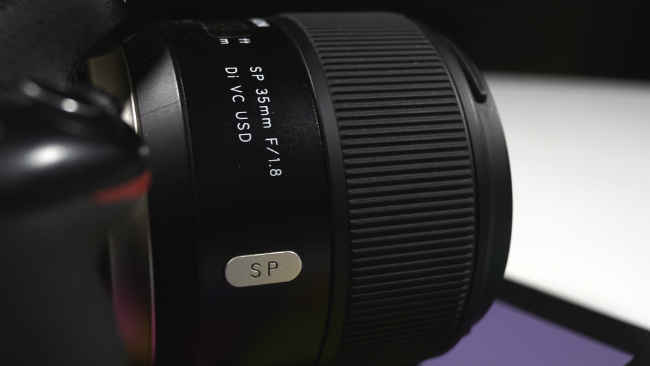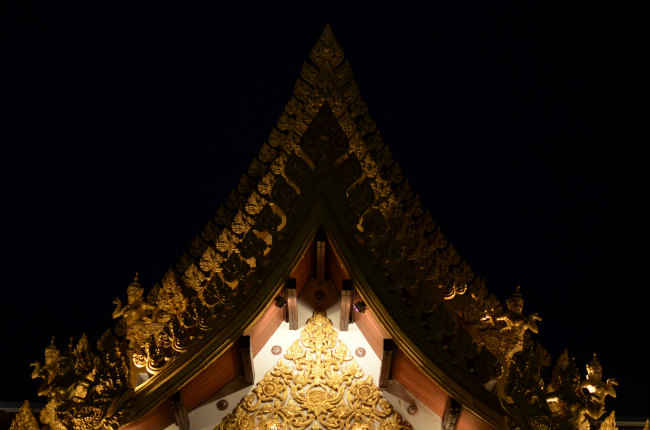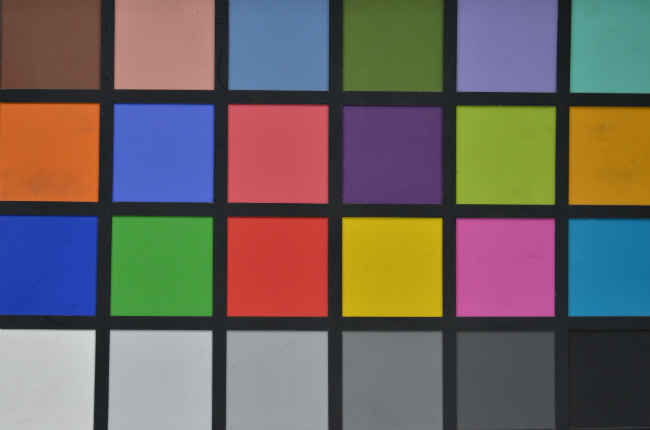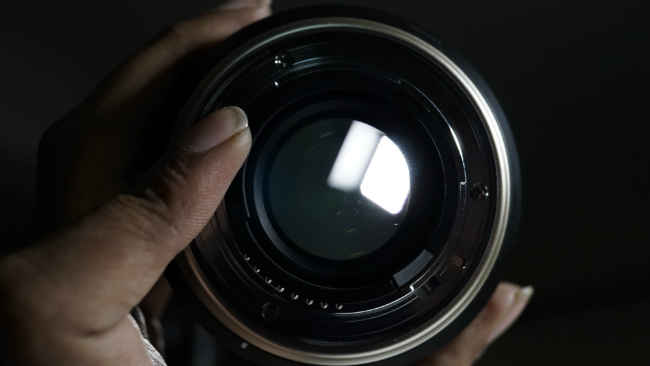Tamron 35mm f/1.8 SP Di VC USD review: Smooth, accurate, expensive
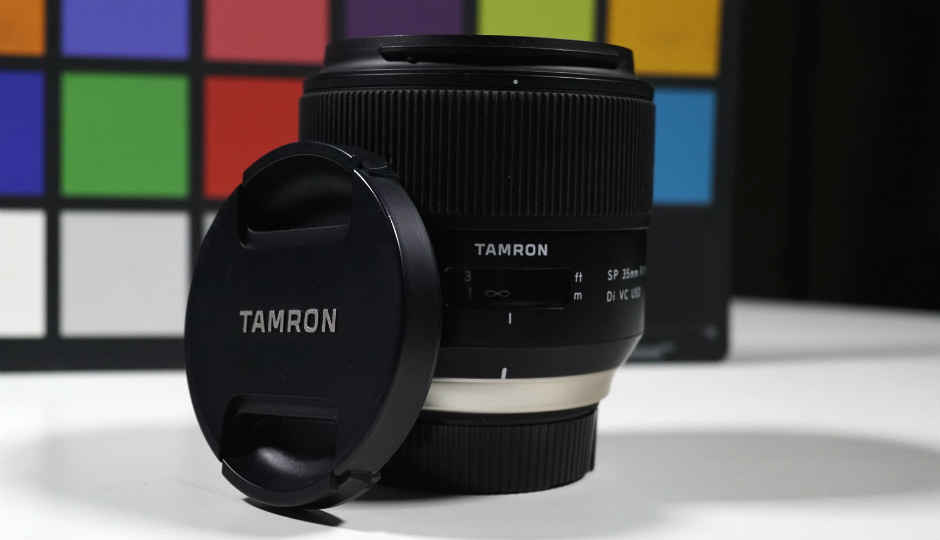
A good prime lens to invest in, one which should serve you easily for a while.
For many reasons, a 35mm lens is an ideal companion for APS-C sensor cameras. For one, the equivalent focal length of a 35mm lens coupled to Nikon’s DX format DSLRs (like Nikon D5500) is 52.5mm with a crop factor of 1.5x, and 56mm with Canon’s APS-C sensor cameras (like Canon EOS 750D) with a crop factor of 1.6x. More often, the field of view rendered by approximately 55mm-equivalent focal length opens up wider shooting opportunity than when you shoot with a 50mm prime lens, which renders equivalent field of view of 75mm with Nikon cameras, and 80mm with Canon’s cameras.
A 35mm prime, hence, can be one of the most crucial lenses that you can accompany your APS-C format DSLR with, particularly when you’re experimenting with various genres of photography in the first few years of you wielding a DSLR. The question of affordability also looms large, after you’ve invested anywhere around Rs. 40,000-Rs. 50,000 for your first DSLR camera body, and one or two accompanying lenses. With that in mind, Nikon has a 35mm f/1.8 prime lens for the budget-conscious buyer, priced at around Rs. 10,000. The lens is admittedly not the fastest, neither does it feature stabilisation, but is a fairly decent one to go with.
Tamron, though, wants to offer you a sound, competent 35mm lens complete with image stabilisation and a sleek casing. Built to fit full-frame sensors, the Tamron 35mm f/1.8 SP Di VC USD prime lens comes with separate versions for Nikon, Canon and Sony cameras. At market price of about Rs. 42,000, the lens is quite pricey in perspective of the entry level offering that Nikon provides with its own 35mm lens. But, there are a number of aspects that Tamron focuses on with this lens, to justify the pricing. It is good for the most part, and while there are a few shortcomings in certain areas, the Tamron 35mm f/1.8 SP is a fine lens to take along with you on tours, for street and landscape photography. Here’s why.
Sharpness
In terms of sharpness of imaging, the lens does fairly well. Since we primarily used the lens with a DX-format camera, the results at f/1.8 remained fairly sharp, with marginal softening around frame edges. Presumably, the results would be slightly softer on a full frame camera as a Canon 1DC or a Nikon D4s, but as far as APS-C format DSLRs go, the results are reasonably decent. The primary reason for the difference is that in APS-C cameras, the lens has a smaller area to capture, which directly leads to sharper frame edges, as against a full frame camera. The sweet spot lies at around f/2.8 to f/4, where the lens shoots the sharpest, clearest photographs. It continues to do well as you keep stepping down, and marginal light distortion kicks in at f/11. At f/16, there is considerable amount of distortion, sharpness is still tight but there’s considerable bleeding of light, too, which is what you would expect. The speed of operation of the lens, coupled with image stabilisation adds to the sharpness that the lens produces.This is the first step by the Tamron 35mm f/1.8 in justifying the price it commands.
Focussing
The Tamron 35mm f/1.8 has quiet, smooth focussing, thanks to the ring-type Ultrasonic Silent Drive (USD) technology it uses. The silent, smooth focussing is a joy, and the speed of focussing adds to the joy. For the most part, the lens focusses fairly accurately, and is fast enough to latch on to the passing bird within your frame. The only point where it stretches the focussing time by a bit is when it has to completely shift the focal plane, which is understandable, although many lenses in the market can focus faster. For most present generation APS-C DSLR cameras, the Tamron 35mm f/1.8 SP Di VC USD prime lens is fast enough, and its accuracy, smoothness of focussing is uniformly excellent.
Colour aberrations, Distortion, Shading
There is practically no colour distortion on frame edges that we could spot across the various environments where we shot. The optic elements retain good clarity, and chrominance accuracy is commendable. Even while shooting vibrant colours with high contrast levels, there are no colour aberrations with the Tamron 35mm f/1.8. There is also no note of shading or vignetting, at least with APS-C cameras that we used the Tamron 35mm f/1.8 lens with. Both of these, combined with the overall excellent clarity, means that the lens is great to use for most photography purposes.
Mounted on a Nikon D5100, there is very little noticeable barreling of photographs. Any lens with focal length below 35mm would usually have barrel distortion, and it is noticeable even in some 35mm lenses, from wide point-of-views. That is not the case with the Tamron 35mm f/1.8 lens, which does very well to maintain the uniformity of a focal plane.
Build and Design
Yet another aspect of this lens that appeals is the quality of build. On the interior, the Tamron 35mm comprises 10 elements that includes one Low Dispersion, one Extra Low Dispersion and two aspherical. The aperture is built of nine curved diaphragms which theoretically should produce excellent bokeh, and in reality too, it somewhat does. On the exterior, durable grade plastic and metal chassis gives the lens a solid, firm bearing. There is one focussing ring, and two switches to toggle between auto/manual focussing and image stabilisation.
The focus ring is fairly broad, and has rigged rubber construction to make it easy to grip and control. This, in turn, also enables smooth focussing. It is a tad heavier than a few other prime lenses out there, but the weight feels assuring, although this may not sit well with lightweight DSLR bodies.
Bottomline
The Tamron 35mm f/1.8 SP Di VC USD prime lens is a really well-equipped lens that also performs well. At about Rs. 42,000, the lens may be a tad pricey for beginners, but semi-pro photographers would find the Tamron 35mm f/1.8 SP Di VC USD an excellent long term investment, at least for the immediate future.

